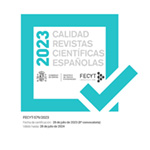The process of academic literacy in Civil Engineering Informatics: An approach to academic writing and its genres in a learning community
Resumen
This paper is inserted in the field of academic literacy processes in the area of engineering. The aim of this study is to understand the current role of academic writing in the undergraduate university teaching in Civil Engineering Computer Science as an influential sub discipline in the world today. This research is based on the notion of academic and disciplinary writing (Bazerman, 1988, 2005; Motta-Roth, 1998; Navarro, 2015; Parodi, 2010; Swales, 1990, 2004) and relies on an ethnographic qualitative research methodology. The main results are presented in an explanatory model that shows, in the studied community, two key elements. On the one hand, the functional, practical, communicative and professional role of writing in this community, given the new requirements of the different production situations that demand a well-prepared computer civil engineer who is prepared to explain, justify and communicate his/her work to diverse audience. On the other hand, the prescriptive, traditional and highly normative rules that conceive academic literacy as a mechanism focused on the formal aspects and on the final product of the writing process. In summary, both elements carry a series of pedagogical implications in the teaching procedure of scientific writing that opens the door for future research.Descargas
Descarga artículo
Licencia
La revista Círculo de Lingüística Aplicada a la Comunicación, para fomentar el intercambio global del conocimiento, facilita el acceso sin restricciones a sus contenidos desde el momento de su publicación en la presente edición electrónica, y por eso es una revista de acceso abierto. Los originales publicados en esta revista son propiedad de la Universidad Complutense de Madrid y es obligatorio citar su procedencia en cualquier reproducción total o parcial. Todos los contenidos se distribuyen bajo una licencia de uso y distribución Creative Commons Reconocimiento 4.0 (CC BY 4.0). Esta circunstancia ha de hacerse constar expresamente de esta forma cuando sea necesario. Puede consultar la versión informativa y el texto legal de la licencia.











